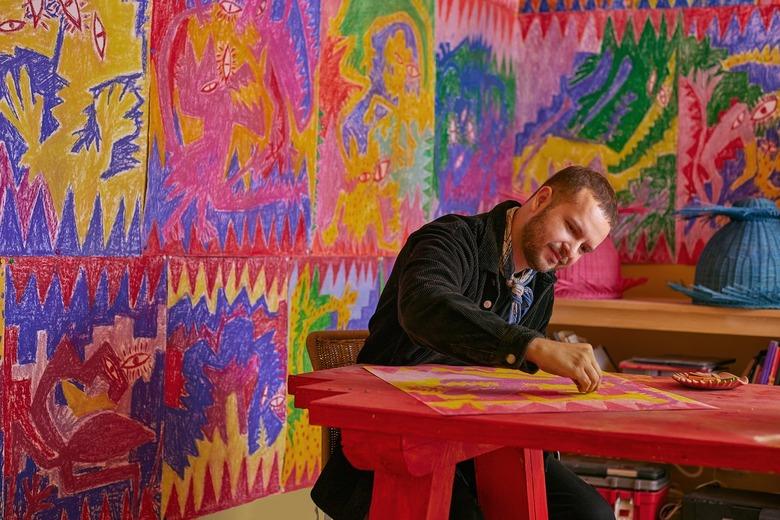Daniel Valero's 'Wild' Objects Combine Rich History With Modern Design
Just three hours north of Mexico City lies San Miguel de Allende, a historic city where many artists and musicians have made their home, including Daniel Valero, the founder of Mestiz, a brand of intricate objects and textile designs.
The word "mestiz" doesn't exist in the Spanish language, and doesn't directly translate to English. Valero created this word as a play on the words "mestizo" and "mestiza," masculine and feminine versions of a term that means "mixed" in his native country of Mexico. The dictionary defines the term as a mix of races, cultures, or even a cross-breeding of vegetables, but it doesn't delve into the complexity of identity. While the term has often been used in a discriminatory fashion, Valero, on the other hand, uses his version of the term in reference to a blending of knowledge: ancient theories and contemporary design ideas.
"That's the most important thing," Valero told Hunker. "The mix between these two worlds to create something new. That's Mestiz."
The artist designs pieces that he likes to call "wild," highlighting that no two are the same. Valero finds it challenging to put into words exactly what he does, but what he does know is that his goal is to collaborate and create works that are unique and experimental, pushing the boundaries a little bit further every time.
For Valero, it begins with a curiosity, whether he wants to work with wicker, ceramics, textiles, or another medium. He immerses himself in the practice via craftspeople who specialize in the subject and generates something alongside them, before starting his own design process. The artist begins producing prototypes, all while building relationships with artisans.
Valero enjoys working with his hands. He studied architecture at Tecnológico de Monterrey, eventually moving on to earn a masters at Art Deco in Paris in textile design. With some basic carpentry courses under his belt, and a love of furniture, he realized while studying architecture that he preferred to do the physical work himself and create on a smaller scale, instead of working with towering buildings. His entry into the world of design was through serape, a colorful woven textile native to Mexico, typically worn as a cloak with fringes on the end, as he began working in the Tamayo Brothers' textile studio, before going off on his own.
"To be able to see the raw materials and transform the raw materials into something you can use, it's like a ceremony," said Valero. "I thought it would be a good idea to start a brand. Mestiz is more of an alter ego. It gives us freedom to create things."
Valero designs in his studio along with his assistant, but they work with various workshops around Mexico to create handmade pieces for galleries, interior designers, and individual clients. While the team has a limited capacity for production, they can customize almost anything.
And even though no two pieces look exactly the same, they all embody some sort of bright color, as influenced by the region in which Valero lives.
"It's a lot about color," explained the artist. "I've been absorbing all of this color. Color is also a way of life. People are afraid of using color, but here, you are immersed in color. I think people here think color is very normal."
He also notes that San Miguel de Allende, besides just being a colorful city, is also ancient, incorporating sophisticated details into its architecture. In terms of technique and craft, Valero draws inspiration from the rich history that surrounds him. For example, doors in Mexico are all different. Even if the physical structures look the same, each door embodies diverse carvings and distinctive symbols. It's how neighbors used to distinguish one family from another.
The artist is currently working on his first solo show in Mexico City, set to premiere on October 8, 2022. This exhibition is called "The Other Island," in which the artist created fauna, vegetation, musical instruments, and other symbols using different objects.
"In the end it's about an ecosystem of design," said Valero. "It's a language more than just an object."
You can keep up with what's next for Valero by following his Instagram or checking out his website.




